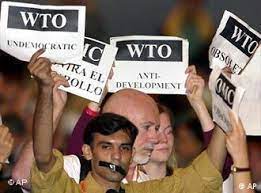Original post here: https://ahtribune.ca/us/americas-collapse/4544-global-health-security.html
After one full year of the COVID19 pandemic, with 2.2 million dead and still record numbers of deaths in the USA and UK, a number of lessons about state responses are emerging. One is that both US-styled health systems and associated health analyses have failed in a spectacular fashion.
The Lancet (2021) and Oxfam (2021) have recently drawn attention to massive inequality growing in many countries, during and as a result of responses to the pandemic. Some of Oxfam’s headlines may give the misleading impression that the virus is the cause of the rising inequality, but the actual report is better than that, pointing to state responses.
After one year of such responses, Australia’s Lowy Institute (2021) developed its own global ‘COVID performance’ rankings, which correctly drew attention to the achievements of some smaller and more independent countries like New Zealand, Vietnam and Thailand. However, due to Lowy’s cold war foundations, ignored the dramatic successes of China (the world’s leading example of virus control) and Cuba (the COVID19 control and treatment leader in Latin America, as well as the leader in global solidarity). The Lowy Institute simply ignored Cuba and Venezuela, while claiming that COVID test data was insufficient on China.

*(Graphic 1: The Lowy Institute drew attention to the achievements of some smaller and more independent states, but ignored China and Cuba)
However, the most dramatic example of self-serving pseudo-science comes from the US-based ‘Global Health Security’ rankings (NTI 2020), prepared by an elite group of mostly US scientists, political, media and industry leaders, backed by big US foundations.
Just as the COVID19 pandemic broke, the ‘Global Biological Policy and Programs’ group of the Nuclear Threat Initiative put out its ‘Global Health Security’ rankings. This was a 324 page report which aimed to show which countries were best “prepared for epidemics or pandemics”, including in “prevention of the emergence or release of pathogens”, “early detection and reporting”, rapid response and mitigation” and a “sufficient and robust health system to treat the sick and protect health workers” (NTI 2020: 24-27). This report claimed to be a unique and leading global analysis.
The NTI report (2020) ranked the USA and UK as the two best prepared (by far) for any emerging “epidemic or pandemic”. Within a few months that prediction was shattered. After one year the USA and UK – except for Italy and some smaller European states – were reporting the highest death rates in the world. At 27 January 2021 the USA reported 433,905 COVID deaths (1,307/m) and the UK 100,162 deaths (1,471/m); with both countries still noting record numbers of deaths, at that time.

*(Graphic 2: The NTI index 2020 ranked the USA and UK as the countries best prepared for an epidemic or pandemic)
More broadly, of the 28 worst performing countries and territories, those with more than one reported COVID19 death per thousand population (see Table 1 below), eight were ranked amongst the NTI’s 25 “best prepared” countries. Seriously off-target.
Further, many countries that showed superior epidemic control, were given absurdly low NTI rankings. For example Venezuela, with one of the lowest COVID death rates in Latin America (41/m) – less than 1/30th that of the USA and UK – was ranked 176th (of 195) in the NTI tables. Cuba (19/m) was ranked 110th. Vietnam and China, which would go on to show extremely low COVID death rates (Vietnam: 0.4/m; China: 3/m) were ranked 50th and 51th, way down the list.
This was an upside down prediction, a farce and a failure so spectacular that it deserves some closer examination. How could this elite US group get it so wrong?
| Table 1: NTI GHS rankings v. COVID deaths per million outcomes | ||
| Countries | Global health preparedness rank 2019 | COVID19 deaths per million @ 27Jan21 |
| USA | 1 | 1,311 |
| UK | 2 | 1,471 |
| Sweden | 7 | 1,110 |
| France | 11 | 1,134 |
| Spain | 15 | 1,215 |
| Belgium | 19 | 1,791 |
| Portugal | 20 | 1,082 |
| Brazil | 22 | 1,026 |
| World average | 278 | |
| Vietnam | 50 | 0.4 |
| China | 51 | 3 |
| Cuba | 110 | 18 |
| Venezuela | 176 | 41 |
| Syria | 188 | 50 |
| Sources: NTI 2020; Worldometer 2021 – Note: Countries with more than one COVID death per thousand population, at 27 Jan 2021: USA, Brazil, UK, France, Spain, Italy, Colombia, Argentina, Mexico, Peru, Czechia, Belgium, Portugal, Sweden, Switzerland, Hungary, Panama, Croatia, Bulgaria, Armenia, Slovenia, Bosnia and Herzegovina, North Macedonia, Montenegro, Andorra, Gibraltar, San Marino, Liechtenstein (Worldometer 2021). |
The NTI was not a US government project, rather a US elite project. The Nuclear Threat Initiative was started in 2001 by former U.S. Senator for Georgia Sam Nunn, alongside media mogul Ted Turner. The group was initially concerned with arms control (NTI 2021). Its later Global Health Security project grew from that security background, attracting the backing of The Economist magazine’s Intelligence Unit (EIU) and John Hopkins University (JHU).
As the NTI (2020: 7) puts it:
“The NTI, JHU, and EIU project team—with generous grants from the Open Philanthropy Project, the Bill & Melinda Gates Foundation, and the Robertson Foundation—worked with an international advisory panel of 21 experts from 13 countries to create a detailed and comprehensive framework of 140 questions, organized across 6 categories, 34 indicators, and 85 sub-indicators to assess a country’s capability to prevent and mitigate epidemics and pandemics.”
The NTI board of directors included US political, media, diplomatic, academic and scientific figures, with some invited international guests, including former UN officials. The Global Health Security study was backed by an expert advisory panel, also with various US and international figures.
All in vain. The findings seemed to reflect the assumptions that highly privatised US-style health systems could somehow deal with epidemics, pandemics and other natural disasters. Yet it was well known that fragmented and privatised health systems, like that of the US, have long shown expensive and inferior outcomes (Anderson 2006).
The COVID pandemic highlighted precisely that failure (Duckett 2020; Hook and Kuchler 2020). What the GHS report also reveals is that much of the US elite intellectual culture – including academics and scientists, media, government officials and wealthy foundations – perpetuate self-serving ‘exceptionalist’ illusions. By now they may want to forget that report.
What we should understand though is that, under pressure of epidemics and hurricanes, highly privatised, individualistic systems almost always revert to ‘everyone for themselves’ disasters. It should not have been surprising that the best COVID control outcomes can be seen in organised and relatively united societies – whatever their incomes levels – which are able to take swift and decisive action.
I discussed this neoliberal failure in more depth in my book The Pandemic and Independent Countries (Anderson 2020b), the lead article of which is available online (Anderson 2020a).
*(Top image: The U.S. Capitol is centered among the “Field of Flags” at night during the 59th Presidential Inauguration in Washingtion, D.C. The Field of Flags represents the victims of COVID-19. Credit: CBP Photo/ U.S. Customs and Border Protection/ Flickr)
———-
Sources:
Anderson, Tim (2006) Policy Coherence and Conflict of Interest: the OECD Guidelines on health and poverty, Critical Public Health, September (16) 3, 245-257, online: https://tim-anderson.site/wp-content/uploads/2006/07/2006-Sept-Article_Policy-coherence-and-conflict-of-interest-The-OECD-guidelines-on-health-and-poverty.pdf
Anderson, Tim (2020a) How the Pandemic Defrocked Hegemonic Neoliberalism, American Herald Tribune, 22 May, online: https://ahtribune.ca/world/covid-19/4181-pandemic-defrocked-hegemonic-neoliberalism.html
Anderson (2020b) The Pandemic and Independent Countries, Centre for Counter Hegemonic Studies, Sydney
Duckett, Stephen (2020) ‘How the US health-care system works — and how its failures are worsening the pandemic’, The Conversation, 19 November, online: https://theconversation.com/how-the-us-health-care-system-works-and-how-its-failures-are-worsening-the-pandemic-150271
Hook, Leslie and Hannah Kuchler (2020) ‘How coronavirus broke America’s healthcare system’, Financial Times, 30 April, online: https://www.ft.com/content/3bbb4f7c-890e-11ea-a01c-a28a3e3fbd33
Lancet, The (2021) ‘COVID-19—break the cycle of inequality’, 20 January, online: https://www.thelancet.com/journals/lanpub/article/PIIS2468-2667(21)00011-6/fulltext
Lowy Institute (2021) Covid Performance Index, online: https://interactives.lowyinstitute.org/features/covid-performance/
NTI (2020) Global Health Security Index 2019, Nuclear Threat Initiative, online: https://www.ghsindex.org/wp-content/uploads/2020/04/2019-Global-Health-Security-Index.pdf
NTI (2021) About, Nuclear Threat Initiative, online: https://www.nti.org/about/
Oxfam (2021) ‘The Inequality Virus’, 25 January, online: https://www.oxfam.org/en/research/inequality-virus
Worldometer (2021) COVID-19 Coronavirus Pandemic, 27 January, online: https://www.worldometers.info/coronavirus/




